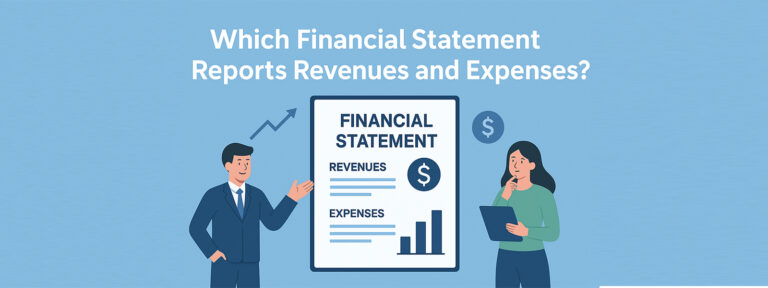To evaluate a company’s financial health, it’s crucial to know where the revenues and expenses are reported. These figures show earnings, expenditures, and ultimately, a business’s profitability.
But which financial statement records them? In this article, we’ll discuss which financial statement reports revenues and expenses, how it links to other key statements, such as the balance sheet and cash flow statement, and why accurate tracking is essential for better financial management.
Income Statement: How Revenue and Expenses Are Reported
Among the three main financial statements, the income statement, also known as the statement of profit and loss, focuses directly on revenues and expenses. It gives a clear view of a company’s financial performance over a period of time, typically a quarter or a fiscal year. By reviewing this statement, you can see whether the business made a profit or loss, and more importantly, understand how that result came about by breaking down revenues, costs, and expenses in a structured way.
The income statement is one of the most valuable tools for understanding the company’s efficiency and sustainability. It starts with revenue ( total income earned from selling goods or services) and subtracts a series of expenses from there on:
- Cost of Goods Sold (COGS): Cost incurred in producing goods or delivering services.
- Operating Expenses: The costs involved in running the business, such as salaries, rent, and utilities
- Interest and Taxes: financial obligations deducted from earnings.
After all expenses are subtracted, the final number, net income, represents the company’s profit (or loss) for that period. If revenues exceed expenses, the business is profitable; if costs are higher, it records a loss.
This report helps stakeholders, investors, and auditors gain a clear understanding of how effectively a company is managing its operations, controlling costs, and generating profit. Thus,l makes it one of the most critical financial statements for evaluating financial health, guiding investment decisions, and shaping long-term business strategy.
The Connection Between Financial Statements
An income statement is only one part of a bigger financial picture of a company.
To understand business performance as a whole, the key is knowing how the income statement interacts with the balance sheet and the cash flow statement. Together, these three reports form the core of financial reporting, revealing how profits are earned, retained, and utilized within a business.
The net income from the determined from income statement flows directly into the balance sheet as retained earnings, illustrating how profits are reinvested to grow the company’s equity and support long-term growth. Meanwhile, the cash flow statement also starts with net income but adjusts it for non-cash items like depreciation and changes in working capital.
These adjustments demonstrate the actual cash moving in and out of the business, providing a realistic picture of liquidity and day-to-day financial stability. When analyzed collectively, they give a complete understanding of a company’s economic well-being, something that no single report can capture on its own.
Why Accurate Tracking of Revenues and Expenses Matters?
Accurate expense and revenue tracking helps in understanding cash flow patterns, assessing profitability, and making financially strategic choices. So, without reliable reporting, businesses risk making decisions based on incomplete or misleading data. It also supports compliance with tax regulations, facilitates forecasting, and provides investors with transparent insights into the company’s financial performance.
Intro
Therefore, expense management tools make it easier by automating data capture, categorization, and reporting. This way, businesses gain an up-to-date and accurate view of their finances, ensuring that critical financial data is both reliable and actionable.
Revenues and expenses are the heart of a business’s financial health, and the income statement is where it lies. When viewed alongside the balance sheet and cash flow statement, revenues and expenses tell how profits are used, how cash flows through the business, and how financially stable the company truly is.
So, revenue and expenses are reported in the income statement. How it connects to the bigger economic picture helps businesses, investors, and managers make informed, data-driven decisions for sustainable growth.
FAQs;
Which financial statement reports revenues and expenses?
Revenues and expenses are reported on the income statement, also known as the profit and loss statement.
What does the income statement show about a business?
It shows whether a company made a profit or loss during a specific period.
What is another name for the income statement?
Profit and Loss Statement (P&L).
What are examples of expenses in an income statement?
Rent, salaries, utilities, and cost of goods sold.


